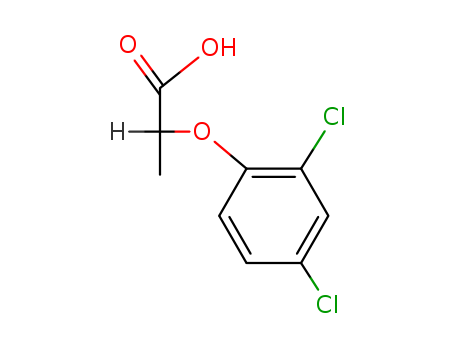- Chemical Name:Dichlorprop
- CAS No.:120-36-5
- Deprecated CAS:7547-66-2
- Molecular Formula:C9H8Cl2O3
- Molecular Weight:235.067
- Hs Code.:29189990
- European Community (EC) Number:204-390-5
- ICSC Number:0038
- NSC Number:39624
- UN Number:3077,2765
- UNII:J7YV2RKO6Q
- DSSTox Substance ID:DTXSID0020440
- Nikkaji Number:J3.254I
- Wikipedia:Dichlorprop
- Wikidata:Q148946
- Metabolomics Workbench ID:67562
- ChEMBL ID:CHEMBL573221
- Mol file:120-36-5.mol
Synonyms:2,4-DP cpd;2-(2,4-dichlorophenoxy)propanoic acid;2-(2,4-dichlorophenoxy)propionate;2-(2,4-dichlorophenoxy)propionic acid;2-methyl-2-(2',4'-dichlorophenoxy)acetic acid;dichloroprop;dichlorprop;dichlorprop, (+,-)-isomer;dichlorprop, (R)-isomer;dichlorprop, (S)-isomer;dichlorprop, potassium salt;dichlorprop, sodium salt



 Xn,
Xn,  Xi
Xi

